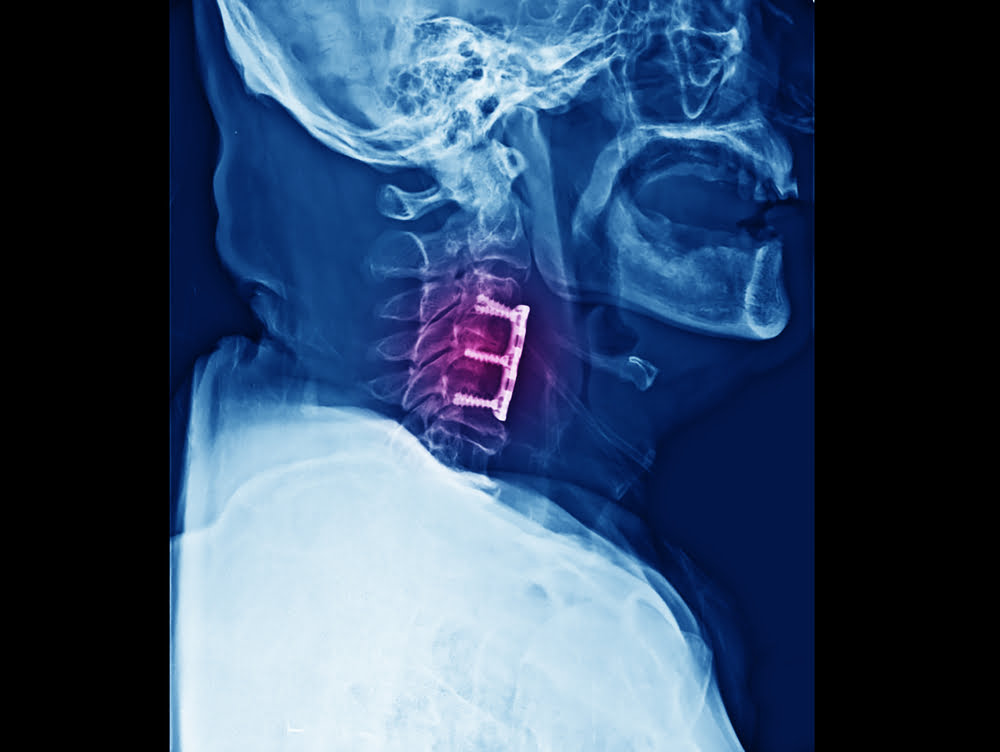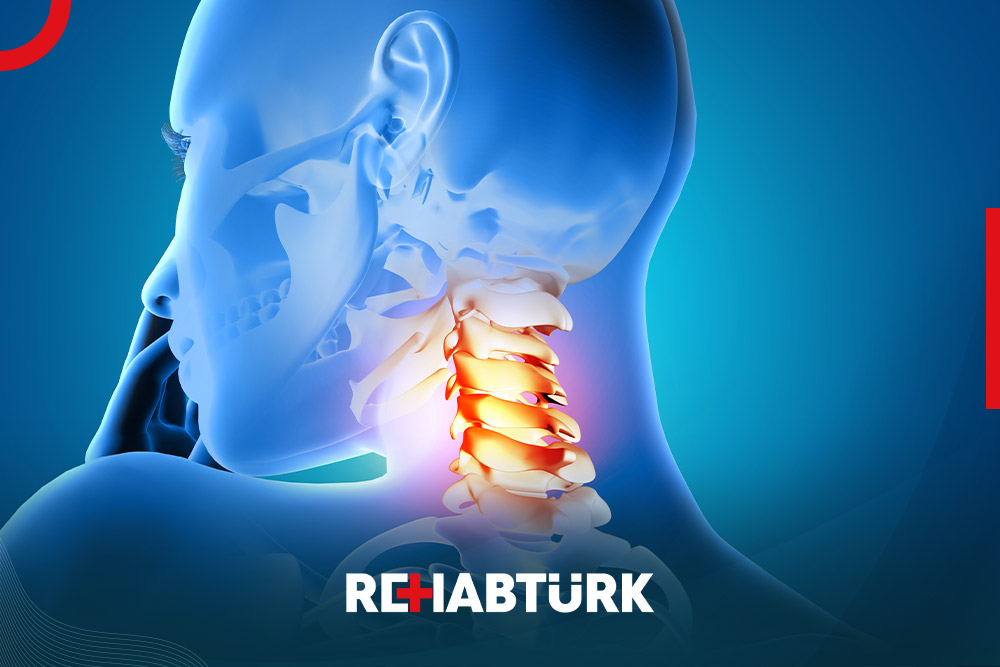Cervical Vertebrae Anterior Partial Discectomy with Fusion in Türkiye
The anterior partial discectomy with fusion is a surgical procedure performed to remove one or more vertebrae from the cervical spine while preserving the surrounding bone that encloses the spinal cord to relieve pressure on the nerve roots and/or spinal cord in cases of severe cervical spinal stenosis. This condition is characterized by the thickening of the bone, resulting in bone spurs, neck pain, and other symptoms that radiate down the neck to the shoulder, arm, and hand. However, this procedure is considered only for significant and advanced problems in the spinal cord, such as severe pain, severe weakness, numbness, and loss of fine motor skills in the hand.

What to know before undergoing cervical vertebrae anterior partial discectomy:
- Quit smoking and all tobacco products, as nicotine in these products impairs bone growth, slows down healing, increases the risk of infection, and hinders fusion success.
- Inform the doctor about all prescription medications, over-the-counter drugs, vitamins, herbal products, and other dietary supplements taken, regardless of whether they were prescribed or not.
- Avoid eating or drinking after midnight on the night before surgery and make necessary arrangements to have someone accompany you home after the procedure.
- Comply with all instructions given by the doctor.
On the day of the surgery:
Wear loose-fitting clothing and easy-to-slip-on flat-heeled shoes, and it is likely that you will take medication on the morning of the surgery.
In the hospital:
- The medical staff will review the patient’s medical history, current medications, allergies, and other relevant information.
- Personal items such as jewelry and dentures will be removed.
- The patient will be connected to monitoring devices such as a heart rate monitor, blood pressure monitor, pulse oximeter, and given sedatives, relaxants, and pain prevention medications.
- An intravenous (IV) line will be inserted in the arm to administer necessary medications and fluids to the patient.
During the procedure:
The procedure begins with the patient lying on their back on the operating table and receiving intravenous medications to induce unconsciousness.
The anesthesiologist inserts a tube through the mouth into the throat to keep the airway open during the surgery.
Note 1: If the surgeon plans to use an autograft from the patient’s hip for bone grafting, the hip area is prepared for bone harvesting.
Note 2: A diagnostic tool called SSEP (Somatosensory Evoked Potentials) may be used to monitor and measure the communication and response between the brain, spinal cord, and nerves to assist in managing the risks of spinal cord injury.

The procedure continues with a 3-inch incision on the side of the neck. The surgeon carefully moves the cervical spine aside along with the neck muscles, trachea, and esophagus. Then, the layer of muscles in the front of the spine is moved aside to allow the surgeon to visualize the bony vertebrae and discs. The surgeon passes a thin needle through the discs to confirm the level of the procedure using image-guided techniques such as fluoroscopy and X-rays. The upper and lower discs are then removed from the vertebral body using small surgical instruments, and a small rotary cutting tool is used to separate the vertebral body from the posterior portion. The disc is connected to the vertebral body and strengthened using a drill or other instruments that promote fusion.
Note 3: In the case of autograft from the hip, an incision is made in the upper portion of the thigh bone, and a portion of the inner layer of the bone is removed. These bone grafts are then inserted between the vertebrae, or a surgeon may use a graft donated by another person or an artificial graft made of ceramic, plastic, or absorbable compounds.
Afterward, a metal plate is placed over the fused area and secured in place with screws inserted into the spine. X-rays or fluoroscopic imaging is performed to ensure the correct placement of all components used. Finally, the skin is closed with sutures, and the incision is covered with a dressing.
Recovery After Anterior Cervical Discectomy and Fusion:
The patient returns home once their health condition stabilizes and is provided with strong pain medications that are used for less than two weeks due to their addictive nature. After that period, pain is managed using acetaminophen (Tylenol).
Potential risks or complications include:
All medical procedures, whether surgical or non-surgical, carry some risk of complications. However, the risks associated with this surgery are greater than other cervical spine surgeries and are specifically related to neurological problems, bone grafting, bleeding, and stroke.
- The patient may experience hoarseness and difficulty swallowing due to the manipulation of the recurrent laryngeal nerve that supplies the vocal cords during surgery. This is usually treated within a few weeks or months, and rarely requires treatment by an ear, nose, and throat specialist.
- Non-fusion or pseudoarthrosis: The vertebrae may fail to fuse, requiring additional surgery.
- Hardware fracture or dislodgement: The implants may fracture or dislodge, necessitating further surgery.
- Graft displacement: The bone graft may move or displace, leading to non-union and possibly requiring additional surgery.
- Spinal surgery may not resolve symptoms such as pain, tingling, numbness, or weakness.
- Nerves may be permanently damaged due to disc material or bone spurs.
- The spinal cord and nerves are at a greater risk during and after surgery.
- Injury to the vertebral artery, which may result in a stroke and/or life-threatening bleeding.
- Complications resulting from cervical discectomy may require additional treatment (medication or surgery).
Instructions at Home:
- Take medications regularly as instructed by the spinal surgeon.
- Avoid non-steroidal anti-inflammatory drugs (NSAIDs) such as aspirin, ibuprofen, Motrin, Aleve, and Advil.
- Applying an ice pack for a short duration can help reduce pain or swelling.
- Leave any dressing in place as directed by the surgeon.
- Experience hoarseness, throat inflammation, or difficulty swallowing, which should resolve within one to four weeks.
- Do not smoke or use tobacco products.
- Drink plenty of fluids and increase dietary fiber to control constipation.
- Avoid driving.
Medical Follow-up if:
- Temperature exceeds 101 degrees Fahrenheit.
- Incision separation or signs of infection such as redness, swelling, and pain.
- Swallowing difficulties interfere with breathing or the ability to drink water.
- Numbness, weakness, or loss of function is experienced.
General Guidelines for the First Two Weeks After Surgery:
- Avoid prolonged sitting.
- Avoid excessive bending of the neck.
- Do not lift anything heavier than five pounds or as instructed by the surgeon.
- Avoid household chores such as vacuuming, ironing, dishwashing, and laundry.
Anterior Cervical Discectomy and Fusion in Türkiye:
Many patients come to Türkiye to undergo anterior cervical discectomy and fusion.
REHABTÜRK HEALTHCARE PROVIDER NETWORK offers therapeutic services to patients along with transportation services, accommodation, and complete trip coordination.
Treatment for cervical disc injury in Türkiye requires at least one week for patients from abroad.
Patients receive intensive care after surgery to monitor their condition and satisfaction following anterior cervical discectomy and fusion. Additionally, our patient support team is available 24/7 throughout the week.

